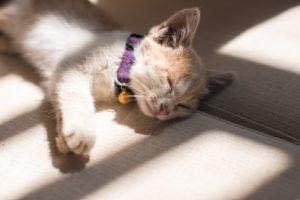Roughly one third of your existence is spent asleep.
A year or so ago I read Lights Out: Sleep, Sugar, and Survival, which escorted my laissez-faire attitude of nonchalance towards sleep out the back door. Long gone are the days of college all nighters fueled by Coke Zero and show tunes, adequately overcome via power naps and stances of “I got this.” Today, I place sleep on a p edestal, understanding how crucial it is for rest, recovery, and well being.
edestal, understanding how crucial it is for rest, recovery, and well being.
For most of human history, sleep was simply a nebulous dreamworld allocated to sages, poems, and romantics. Technolocigal advances in the 1930s capable of measuring the brain’s electrical activity, however, changed all of that. Today, sleep is accepted as a complex, regulated science of the brain. While it’s easy to write sleep off as a waltz through dreamland which simply keeps you spritely in the morning…it’s so much more than that. Let’s take a look at the technicalities of sleep, shall we? After all, it affects your existence in more ways than you may dream of.
WHAT IS SLEEP?
There are two basic types of sleep: around 80% is NREM (non-rapid eye-movement sleep), with the remaining 20% being REM (rapid eye-movement sleep). These two types are divided into 5 stages, all of which are NREM except for stage 5. (Oh hey REM!) A single night’s sleep typically consists of multiple cycles through these stages, lasting around 70 – 110 minutes for each cycle. Sleep disorders occur when things get out of whack with these stages.
SLEEP STAGES
Stage 1: Stage 1 is the light sleep you experience in the first 1-10 minutes after nodding off. You are easily awakened during this time. If you’ve ever fallen asleep then abruptly woken up like you fell off a cliff or were slapped in the face, it’s from this stage. I always thought that was just a weird thing that would happen to my body, so I personally find this research reassuring. In fact, last night I abruptly awoke like this shortly after nodding off, and my first thought was: Stage 1 Fail!
Stage 2: This is where your body has accepted its descension into the altered state of consciousness, and begings preparing for intense slumber. Your body processes slow down as you get colder and relaxed. Stage 2 lasts for about 10-25 minutes in your first sleep cycle, and a little longer in each successive cycle.
Stage 3: This is the first of slow-wave, deep sleep, although it actually only lasts a couple of minutes.
Stage 4: This is even deeper slow-wave sleep, lasting about 20-40 minutes. These deep sleep stages are the most physically restorative for the body.
Stage 5: REM. This is where you dream your vivid dreams. During REM sleep (which lasts only 1-5 minutes or so in your first cycle), your eyes move rapidly, and your brain waves become desynchronized and of mixed frequency. Your muscles also “freeze” in order to prevent you from, well, acting out your dreams. (Oh hey sleepwalkers!) REM may be especially important for memory consolidation. This explains the whole cramming for-a-test thing where you can’t seem to remember anything, then you wake up and OMG YOU KNOW IT NOW. Also interestingly, while blood flow in the brain slows down during NREM sleep, brain activity during REM is similar to the awakened state, particurlary in parts of the brain involved with emotions and visual associations. (Who says you can’t see things with your eyes closed?) So for your body, dreaming is kinda like being awake. Except you’re not.
WHO SAID GO TO BED ANYWAY?
While it may seem “natural” to be awake during the day and sleep at night, this actually isn’t technically the case. Consider babies. In the first few months, infants sleep an equal amount throughout day and night. They don’t get “normal” 24 hour cycles until 2-3 months after birth. The typical 24 hour wake/sleep cycle is mandated by 2 major things in the brain: 2 contradictory perpetual processes (S and C), as well as one’s overarching circadian rhythm.
THE TWO SLEEP PROCESSES
At any given time, there are two processes in your body which interact (fight?) to determine your state of alertness. Process S (“Sleep Pressure”) promotes sleep, while Process C (“Wake Drive”) promotes wakefulness. Process S builds up steadily during the day, until you finally fall asleep, relieving the pressure. It begins to build up again when you awake in the morning. Now if we JUST had Process S, then we’d wake up super energetic, but would get consistently sleepy as the day progressed. But this doesn’t typically happen. Instead, we’re pretty “good” throughout the day, then automatically get sleepy all at once when darkness falls.
Why, you ask? It’s all thanks to Process C, or “Wake Drive.” Process C keeps you awake, and also builds up constantly throughout the day, nullifying the sleepy effects of Process S. Unlike Process S, however, which is slowly relieved during the night, Process C plummets right at bedtime. So come night, you’re FULL of sleep pressure (Process S) which needs to be relieved, and when Process C drops: BINGO! Sleep time!
What causes Process C to plummet? Enter Circadian Rhythm!
CIRCADIAN RHYTHM
A person’s circadian rhythm refers to the natural, “automatic” biological time clock in a person – a sleep and wake cycle which the brain follows regardless of the actual time. It’s also separate from the amount of sleep you’ve had prior (or Process S, discussed above). So even if you slept tons the night before, you’ll still probably become sleepy the next night, thanks to Process C and your circadian rhythm.
The average circadian rhythm wake/sleep cycle is 24.25 hours, but it varies by person. In fact, people who are “night owls” (like me) may have inherently longer circadian rhythms, explaining why you just can’t go to bed yet. (“Early birds” may have rhythms less than 24 hours.) The circadian rhythm is primarily determined by light and darkness, and mediated by the melatonin hormone secreted by the pineal gland. In future posts in this series, I will explore how our modern existence messes with our circadian rhythm, and how you can get back on track! Stay tuned!
REFERENCES
http://www.ncbi.nlm.nih.gov/books/NBK19956/
http://www.health.harvard.edu/newsletters/harvard_health_letter/2012/may/blue-light-has-a-dark-side/
http://chriskresser.com/how-much-sleep-do-you-need
http://www.ncbi.nlm.nih.gov/books/NBK19956/

